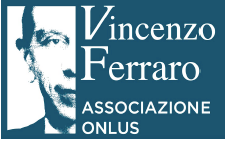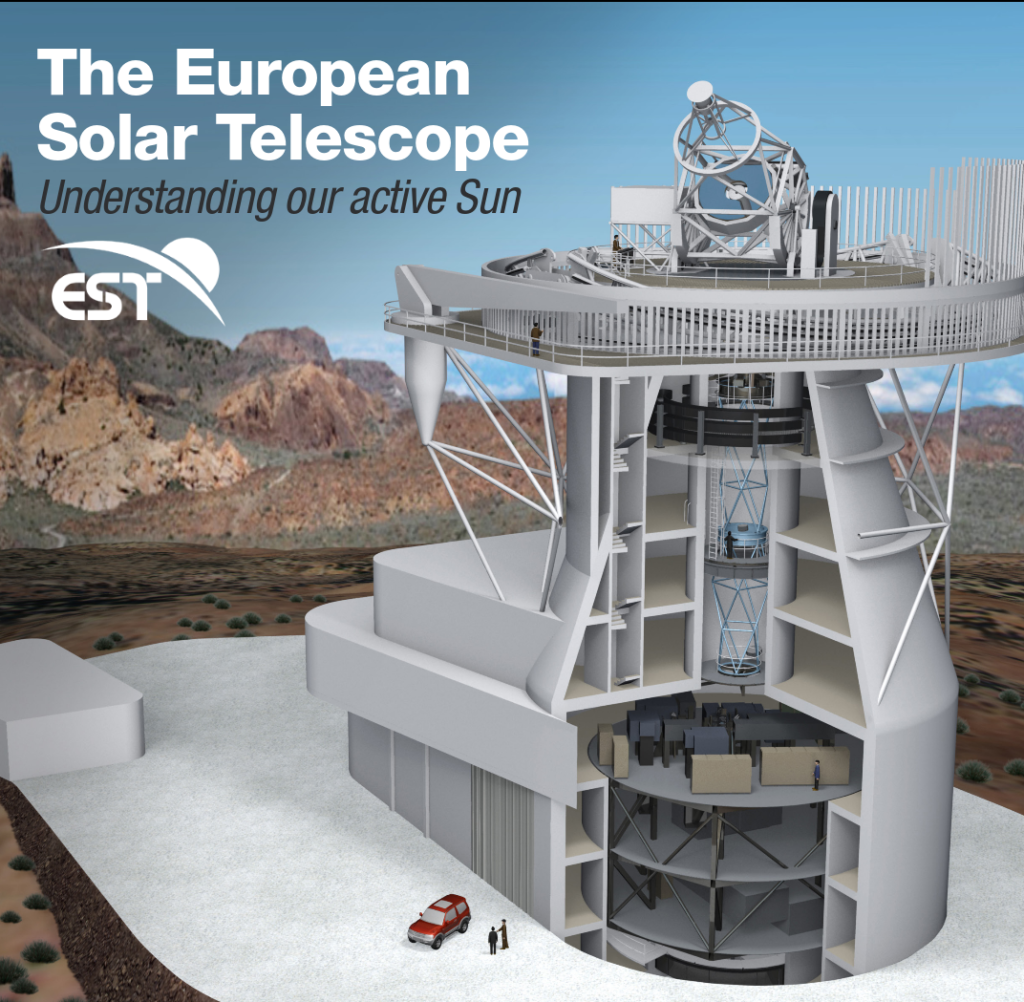Home » SWICo News (Page 3)
Category Archives: SWICo News
SOLARNET Mobility of Young and Experienced Researchers Programme Announcement (1st Call)

The SOLARNET Mobility Evaluation Committee (MEC) is pleased to announce the 1st Call for Proposals of Mobility Programme of Young and Experienced Researchers (Deadline: May 31st, 2019).
SOLARNET (http://solarnet-project.eu/home) aims to bring together and integrate the major European research infrastructures in the field of high-resolution solar physics, in order to promote coordinated research and development. In this regard, SOLARNET will support the mobility of early stage researchers (ESRs) as well as experienced researchers as part of the networking activities foreseen in the project. This task is supervised by the MEC, which evaluates and selects the submitted applications. This first Call is related to stays to be carried on during the period September 1st, 2019 – February 29th, 2020. Detailed information about the Young and Experienced Researchers Mobility Programme can be found at http://solarnet-project.eu/Mobility-Programmes and in the attached file below:
VINCENZO FERRARO AWARD 2019 for young scholars in Space Physics

The Vincenzo Ferraro Association intends to pay tribute to Prof. Vincenzo C.A. Ferraro, originally from Sorrento peninsula (Campania, Italy), an astrophysicist and pioneer in plasma physics, in order to encourage studies in the field of space physics.
With this in view, the Vincenzo Ferraro Association, represented by President Maddalena Ferraro, establishes for the year 2019 a “Vincenzo Ferraro” Prize to be assigned, after evaluation by a qualified scientific panel, to a young scholar in the physics of space plasmas with particular reference to his/her doctoral thesis.
Admission to this prize is reserved to students of Italian and foreign universities who have obtained a PhD degree in Physics or equivalent in Italy or abroad after September 1, 2014 with a thesis on topics relevant to the study of space plasmas.
All the details can be found in the attached official announcement.
NSO (Boulder) – Community Science Program Post Doc – 2 Research Associate
1 – The NSO is seeking a post-doctoral research associate to work on the validation of science (level-2) data products in the solar chromosphere, in preparation for the first light of the Daniel K. Inouye Solar Telescope (DKIST) of the National Science Foundation (NSO).
The NSO has initiated an effort – funded by the National Science Foundation and led by Dr. Han Uitenbroek – that includes the inversion of spectro-polarimetric observations of the chromosphere with the DKIST, using the newly developed Departure coefficient driven Spectro-polarimetric Inversion with Response functions (DeSIRe) code. DeSIRe solves the Non-Local Thermodynamic (NLTE) problem of the magnetized chromosphere taking into account the line polarization induced by the Zeeman effect. It is expected that scattering polarization and the Hanle effect will also contribute importantly to the polarization of chromospheric signals (the so-called “NLTE of the 2nd kind”), especially above the quiet Sun and for near-the-limb observations. The complexity of the forward model for the scattering polarization in the magnetized chromosphere, unfortunately, makes it very hard to design efficient and reliable inversion schemes that could be used for routinely processing the very large data output that are expected of the DKIST.
Given the present lack of viable tools for inversion of chromospheric signals affected by scattering polarization, a useful first step is to validate the inversion products of DeSIRe and quantify the “errors” caused by neglecting scattering polarization and the Hanle effect. This can be done by using a forward model that includes scattering polarization in order to synthesize the spectral line polarization produced by DeSIRe-inverted atmospheres, and compare it with the original observations. The forward model that we identified for this task is the HanleRT code, which was developed at the High Altitude Observatory of the National Center for Atmospheric Research (HAO-NCAR), also in Boulder. The successful candidate will work under the joint supervision of Dr. Roberto Casini (HAO) and Dr. Han Uitenbroek (NSO), and will be located at HAO. He/she will learn the physics of scattering polarization and the Hanle effect, polarized radiative transfer, and the application of both the DeSIRe and HanleRT code. The main deliverable of this appointment is the development of a data pipeline between the two codes, which will be capable of producing “synthetic maps” of the solar chromosphere using HanleRT, to be compared with the DKIST observations, starting from inverted data products from DeSIRe. An additional outcome will be the conception of a numerical/statistical approach to quantify the errors on the DeSIRe-inverted atmospheres based on the variance between the real and synthetic observations.
The appointment is initially for one year, renewable for a second year, contingent upon satisfactory performance and availability of funds.
Requirements: PhD in Physics, Astrophysics, or related sciences; proficiency in Fortran 90, and OpenMPI; experience with data visualization methods and tools (e.g., IDL, Python VTK) and high-performance computing will be necessary. Basic knowledge of C is desirable.
Please apply on the AURA Company Website, using the link: recruiting2.ultipro.com/SPA1004AURA/JobBoard/57b96f30-6a4b-42cc-8f73-d417a17b54e9/OpportunityDetail?opportunityId=02d19fb6-3616-447e-a91f-783a3d6dfa2c
The Association of Universities for Research in Astronomy, Inc. (AURA) operates several observatory centers (including the National Optical Astronomy Observatory, the National Solar Observatory (NSO), Large Synoptic Survey Telescope and the Gemini Observatory) in the United States and Chile under cooperative agreements with the National Science Foundation.
2 – The NSO is seeking a post-doctoral research associate to work on the validation of science (level-2) data products in the solar corona, in preparation for the first light of the Daniel K. Inouye Solar Telescope (DKIST) of the National Science Foundation (NSF).
The successful applicant will work with senior scientists to develop a pipeline which will deliver scientifically valuable data for the community, with special emphasis on spectro-polarimetry with at least two of the DKIST first-light instruments. The work will include the development of synthetic models of polarized light from the solar corona, analysis of infrared data from existing instruments such as HAO’s CoMP, and, eventually, unique data from DKIST instruments. The associate will develop skills in cutting edge theoretical and observational solar physics, with direct access to some of the first data from DKIST. The work will be done mostly at NSO’s HQ in Boulder, Colorado, but will likely require travel to Hawaii, and international travel. The corona presents special challenges, and DKIST is the largest coronagraphic community facility devoted to measuring the coronal magnetic field. DKIST therefore offers the opportunity to work with data that break through previous barriers with significant potential for new understanding. The skills developed during the two-year appointment will be attractive to future employers at universities and elsewhere.
The main deliverable of this appointment is the development of data pipelines that will be capable of inverting spectro-polarimetric observations of the Corona into physical values of the coronal magnetic field that can be made available to the solar community.
The successful candidate will work under the joint supervision of Dr. Philip Judge (HAO) and Dr. Han Uitenbroek (NSO), and will be located at NSO. The appointment is initially for one year, renewable for a second year contingent upon satisfactory performance and availability of funds.
Requirements: PhD in Physics, Astrophysics, or related sciences. Experience with data visualization methods and tools (e.g., IDL, Python VTK) and high-performance computing is highly desirable.
Please apply on the AURA website, using the link recruiting2.ultipro.com/SPA1004AURA/JobBoard/57b96f30-6a4b-42cc-8f73-d417a17b54e9/OpportunityDetail?opportunityId=5000a579-af12-471a-a453-22d52927e061 The Association of Universities for Research in Astronomy, Inc. (AURA) operates several observatory centers (including the National Optical Astronomy Observatory, the National Solar Observatory (NSO), Large Synoptic Survey Telescope and the Gemini Observatory) in the United States and Chile under cooperative agreements with the National Science Foundation.

Assemblea nazionale SWICO 2018
L’ASSEMBLEA NAZIONALE “SPACE WEATHER ITALIAN COMMUNITY” per la rielezione del Presidente e del Consiglio Direttivo è convocata per il giorno 6 dicembre 2018 a Roma, dalle 10:30 alle 16:00 presso l'aula "Grassano" della Macroarea di Scienze dell'Università degli Studi di Roma Tor Vergata.
Data l’importanza della riunione, si raccomanda la massima partecipazione. Il Presidente SWICO. Prof. V. Carbone.
“Premio Alberto Egidi” e “Premio Egidio Landi”
“Premio Alberto Egidi”
Per ricordare l’opera del Prof. Alberto Egidi, il Consorzio Interuniversitario di Fisica dello Spazio (CIFS), in collaborazione con il Dipartimento di Fisica dell’Università di Roma “Tor Vergata”, ha istituito dal 2018 un premio a lui dedicato.
Il concorso è volto a premiare la migliore tesi di Dottorato di Ricerca con argomento Fisica del Mezzo interplanetario, Eliofisica, o Space Weather pubblicata nell’ultimo triennio (Cicli di Dottorato XXVIII, XXIX, XXX).
Il premio consiste nell’invito a presentare i risultati del lavoro di tesi con una comunicazione orale (30 minuti) durante la “Terza Conferenza della Comunità Solare ed Eliosferica Italiana” (SoHe3), che si svolgerà a Torino il 29-31 Ottobre 2018 (http://sohe3.oato.inaf.it/ ). Per il vincitore è previsto il rimborso delle spese di viaggio e l’esenzione dalla quota di iscrizione al Congresso stesso. Il vincitore avrà inoltre la possibilità di pubblicare il suo contributo nei proceeding del convegno sulla
Rivista “Nuovo Cimento”.
Il vincitore sarà selezionati tra i candidati segnalati dai rispettivi supervisori o da un membro del Collegio dei Docenti.
Tali segnalazioni dovranno riportare:
- nome, cognome e indirizzo email del candidato;
- curriculum del candidato;
- breve relazione a cura del supervisore o di un membro del Collegio competente nella quale venga presentata la figura scientifica del candidato e i risultati conseguiti dalla tesi;
- Istituto o Dipartimento presso il quale è stata svolta la tesi di Dottorato;
- titolo ed un breve riassunto della tesi;
- data di approvazione del Collegio competente;
- indirizzo web, anche riservato, sul quale la tesi possa essere consultata in esteso dalla Commissione giudicatrice, garantendone comunque la riservatezza.
La segnalazione e la relativa documentazione deve essere fatta pervenire via email al Comitato Organizzativo Scientifico del Meeting SoHe3, all’indirizzo soc.sohe3@oato.inaf.it con oggetto “Candidatura Premio Egidi” entro il entro il 31 luglio 2018.
“Premio Egidio Landi”
Per ricordare l’opera scientifica del Prof. Egidio Landi Degl’Innocenti, l’INAF – Osservatorio Astrofisico di Torino consegnerà nel 2018 un premio a lui dedicato. L’iniziativa è volta a premiare la migliore tesi di Laurea Magistrale con argomento Fisica Solare pubblicata nell’ultimo triennio (dal 1 luglio 2015 in poi).
Il “Premio Egidio Landi” consiste nell’invito a presentare i risultati del lavoro di tesi con una comunicazione orale (20 minuti) durante la “Terza Conferenza della Comunità Solare ed Eliosferica Italiana” (SoHe3), che si svolgerà a Torino il 29-31 Ottobre 2018 (http://sohe3.oato.inaf.it/ ). Per il vincitore è previsto inoltre il rimborso delle spese di viaggio e l’esenzione dalla quota di iscrizione al Congresso stesso. Il vincitore avrà inoltre la possibilità di pubblicare il suo contributo nei proceeding del convegno sulla Rivista “Nuovo Cimento”.
Il vincitore sarà selezionato tra i candidati che avranno inviato la domanda di partecipazione al premio allegando:
- nome, cognome e indirizzo email del candidato;
- curriculum del candidato;
- breve relazione firmata a cura del supervisore o di un membro del Collegio competente nella quale venga presentata la figura scientifica del candidato e i risultati conseguiti dalla tesi;
- Istituto o Dipartimento presso il quale è stata svolta la tesi di Laurea;
- titolo ed un breve riassunto della tesi;
- data di approvazione del Collegio competente;
- indirizzo web, anche riservato, sul quale la tesi possa essere consultata in esteso dalla Commissione giudicatrice, garantendone comunque la riservatezza.
La domanda e la relativa documentazione devono essere fatte pervenire via email al Comitato Organizzativo Scientifico del Meeting SoHe3, all’indirizzo soc.sohe3@oato.inaf.it con oggetto “Candidatura Premio Landi” entro il 31 luglio 2018.
SoHe3
 Terza Conferenza della Comunità Italiana di Fisica Solare ed Eliosferica
Terza Conferenza della Comunità Italiana di Fisica Solare ed Eliosferica
Torino, 29 – 31 Ottobre 2018
La “Terza Conferenza della Comunità Italiana in Fisica Solare ed Eliosferica – SOHE3” si terrà a Torino, dal 29 al 31 Ottobre 2018, e sarà organizzata dall’ INAF-Osservatorio Astrofisico di Torino e dall’ Università di Torino – Dip. di Fisica. Il convegno avrà luogo nell’Aula Magna della “Cavallerizza Reale” (situata nel centro storico, in via Verdi 9, Torino).
Oratori invitati confermati: Luca Belluzzi, Catia Grimani, Enrico Landi, Gianni Lapenta, Lorenzo Matteini, Giuseppina Nigro, Susanna Parenti, Mirko Piersanti, Paolo Romano, Paola Testa. Una versione preliminare del programma scientifico è disponibile sul sito web della conferenza.
Invio degli abstract e registrazione alla conferenza: adesso aperte, con scadenza 31 agosto 2018.
Richiesta di supporto economico per studenti e post-doc: adesso aperta, con scadenza 31 agosto 2018.
Atti della conferenza: gli atti della conferenza SOHE3 saranno pubblicati sulla rivista “Il Nuovo Cimento”; tutti gli autori selezionati per una presentazione orale o poster saranno invitati a pubblicare un articolo su un volume dedicato agli atti della conferenza.
Per maggiori chiarimenti su tutti gli argomenti sopra elencati si prega di fare riferimento al sito internet della conferenza, oppure di inviare una mail al LOC o al SOC agli indirizzi sotto indicati.
WEBSITE: http://sohe3.oato.inaf.it/
SOC (soc.sohe3@oato.inaf.it):
Alessandro Bemporad – INAF Osservatorio di Torino
Serena Criscuoli – NSO, National Solar Observatory, Boulder, CO
Dario Del Moro – Università di Roma “Tor Vergata”, Dipartimento di Fisica
Salvo Guglielmino – Università degli Studi di Catania
Simone Landi – Università di Firenze & INAF Osservatorio di Arcetri
Monica Laurenza – INAF-Istituto di Astrofisica e Planetologia Spaziali, Roma
Fabio Reale – Università di Palermo & INAF Osservatorio di Palermo
Thomas Straus – INAF Osservatorio di Capodimonte
Antonio Vecchio – LESIA-Observatoire de Paris- France / Dept. of Astrophysics/IMAPP – Radboud University, Nijmegen, The Netherland
LOC (loc.sohe3@oato.inaf.it):
Alessandro Bemporad (Chair)
Lucia Abbo
Carlo Benna
Tullia Carriero
Alberto Cora
Annalisa Deliperi
Silvano Fineschi
Federica Frassati
Silvio Giordano
Salvatore Mancuso
Silvano Massaglia
Gianalfredo Nicolini
Stefania Rasetti
Roberto Susino
Luca Zangrilli
Giornata di presentazione di EST ai Lincei
Con piacere vi informiamo della giornata di presentazione di EST “European Solar Telescope”, che si terrà il prossimo 5 ottobre dalle ore 9.30 presso la Palazzina dell’Auditorium dell’Accademia dei Lincei, Via della Lungara 230, Roma.
piacere vi informiamo della giornata di presentazione di EST “European Solar Telescope”, che si terrà il prossimo 5 ottobre dalle ore 9.30 presso la Palazzina dell’Auditorium dell’Accademia dei Lincei, Via della Lungara 230, Roma.
Questa giornata sarà la prima di una serie di eventi analoghi organizzati nei 15 paesi europei che partecipano alla realizzazione del progetto.
Inserito nel 2016 nella road map di ESFRI come “struttura di ricerca di importanza strategica”, EST sarà il più grande telescopio solare europeo e tra i maggiori al mondo.
Il progetto EST vede coinvolti 21 istituzioni scientifiche ed industriali, di 15 Paesi europei, ed è stato finora finanziato dalla Commissione Europea attraverso progetti dei programmi FP7 e H2020 per un totale di più di 16 milioni di Euro.
La giornata di presentazione vedrà la partecipazione della comunità scientifica italiana ed europea coinvolta nel progetto, dell’eccellenza italiana del settore industriale per l’astrofisica, delle istituzioni e della stampa ed è organizzato, con il supporto dell’Instituto de Astrofisica de Canarias (IAC), dalle istituzioni scientifiche italiane coinvolte in EST: l’Istituto Nazionale di Astrofisica e le Università della Calabria, Catania e Roma “Tor Vergata”.
Seguiranno maggiori dettagli sul programma dell’evento.
Cogliamo l’occasione per porgere cordiali saluti
Il Comitato Scientifico (F. Berrilli, M. Collados, I. Ermolli, F. Lepreti, F. Zuccarello)
International Space Weather Medals Call for Nominations
Dear Colleagues,
We are happy to announce the 2017 contest for the international space weather medals. The new medal recipients will be announced in a medal ceremony at the European Space Weather Week, the 27th of November, 2017.
All three prizes (Chizhevsky, Nicolet, Birkeland) are prestigious recognitions of recipients’ major contributions in the field of space weather. Medal recipient’s work must have been documented in peer review journals or book chapters, or must be a technological contribution that has led to a fully implemented new space weather capability. Medal
recipient’s work must be relevant to space weather and/or space climate. The work must also be internationally recognized.
Please find the necessary information at the URL:
http://www.stce.be/esww14/
We encourage all of you to think about potential nominees.
With Kind Regards,
Mauro Messerotti, on behalf of the SW Medal Committee
NAM 2017: Call for abstracts on “The Physical Processes Underlying Space Weather”
We invite abstract submission for the National Astronomy Meeting 2017 session “The Physical Processes Underlying Space Weather: Formation, Eruption and Propagation of Coronal Mass Ejections”.
The aim of the session is to bring together solar and heliospheric physicists, both modelers and observers, to discuss the formation and evolution of magnetic flux ropes with particular focus on:
- what are the universal physical mechanisms responsible for triggering solar eruptions,
- how and when magnetic flux ropes are formed,
- how their structure evolves during their propagation through the inner heliosphere,
- how the structure of the interplanetary magnetic clouds relate to their source regions on the Sun.
The NAM 2017 will be hosted at the University of Hull (UK) during the 2nd-6th July 2017. We note that this is shortly before the IAU Symposium on Space Weather of the Heliosphere in Exeter (UK), and that this perhaps provides an opportunity for colleagues from further afield to combine two meetings.
Please note that the deadline for abstract submission is April 14, 2017.
For more information, please visit the conference website: https://nam2017.org/
New Topical Issues on SWSC

Dear colleagues,
Three new Topical Issues have just been announced in the Journal of Space Weather and Space Climate. You can find the description at
http://www.swsc-journal.org.
The titles are :
“Developing New Space Weather Tools: Transitioning fundamental science
to operational prediction systems”, deadline: 28 April 2017
“Measurement, Specification and Forecasting of the Solar Energetic
Particle Environment and GLEs”, deadline 30 April 2017
“Flares, coronal mass ejections and solar energetic particles and their
space weather impacts”, deadline 30 April 2017
Do not hesitate to advertise them, or even contribute !
Best regards
Anna and Jean
